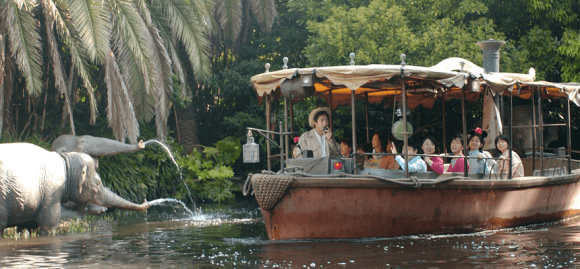
Tokyo Disneyland and Disney Sea can both make pretty strong claims for the “Happiest Place on Earth” title. Combining the cast of the animation pioneer’s collected works with Japanese sensibilities results in some of the most unbridled and deep-rooted enthusiasm for cartoon characters you’re likely to find anywhere. Adding to the experience is the attention to detail and hospitality that comes from the world’s preeminent amusement park operator and the country with the highest customer service standards on the planet.
But while all those things go a long way towards helping visitors enjoy their stay, the excitement they bring just might pale in comparison to the joy guests feel when they realize there’s something Japan’s Disney theme parks don’t have: mosquitos.
Pulling off a bug-free environment is no mean feat, because whether you’re in Fantasyland or Tomorrowland, you’re still in Japan, where the hot and humid summer is a breeding paradise for mosquitos. Give the critters heat and a body of standing water, and they’ve got just about everything they need to start reproducing. So why aren’t the numerous fountains and aquatic attractions you’ll find at Disneyland and Disney Sea teeming with mosquito eggs?
Something is keeping Splash Mountain from being renamed “Larva Mountain” for three months out of the year.
The answer lies in Tokyo Disney Resort’s water processing facility, where the water used inside the park is treated to repel insects, as well as prevent the growth of algae. The chemicals used are carefully selected so as to not affect its appearance or impart harsh odors, which is why Small World doesn’t smell like a chlorine-heavy public pool.
▼ There’s also probably less pee here, too.
While we wouldn’t recommend drinking a handful of Disneyland water, the treatment process does leave it gentle enough that there’s no cause for concern if it comes into contact with your skin. This is good to know, considering how many rides and attractions are specifically designed to get guests wet.
Speaking of which, another part of Disneyland’s thoroughly thought-out water policy involves just how much water you get doused with. There are actually people who get paid to figure out the sweet spot where enough water is sprayed to give you a giggle-inducing surprise and cool you off, but not so much that you’re clothes are soggy and uncomfortable for the rest of the day.
But wait a minute. If Disney is pumping out tankfuls of super water, then why do some attractions, like the Mississippi-inspired Rivers of America and Jungle Cruise, feature water that’s clearly murky?
▼ And how come, even though it’s so good at getting rid of mosquitos and algae, it does nothing to keep hippos away? Seriously, between this and Small World up there, they’re practically taking over the place.
Once again, you can chalk the cloudiness up to Disney’s water treatment engineers, who add colorings to achieve the desired visual effect. Not only does this help them recreate the muddy Mississippi, it also masks the bottom of the canal, creating an illusion that it’s deeper than it really is.
Like the insect repellants, the coloring agents used are environmentally friendly. What’s more, Disneyland and Disney Sea regularly filter, reprocess, and recirculate the water they use back into the parks. So whether you’re more concerned with escapist fun or real world ecological issues, it’s a system anyone can think highly of (with the possible exception of entomologists).
Source: Naver Matome
Top image: Tokyo Disney Resort
Insert images: Tokyo Disney Resort (1, 2)